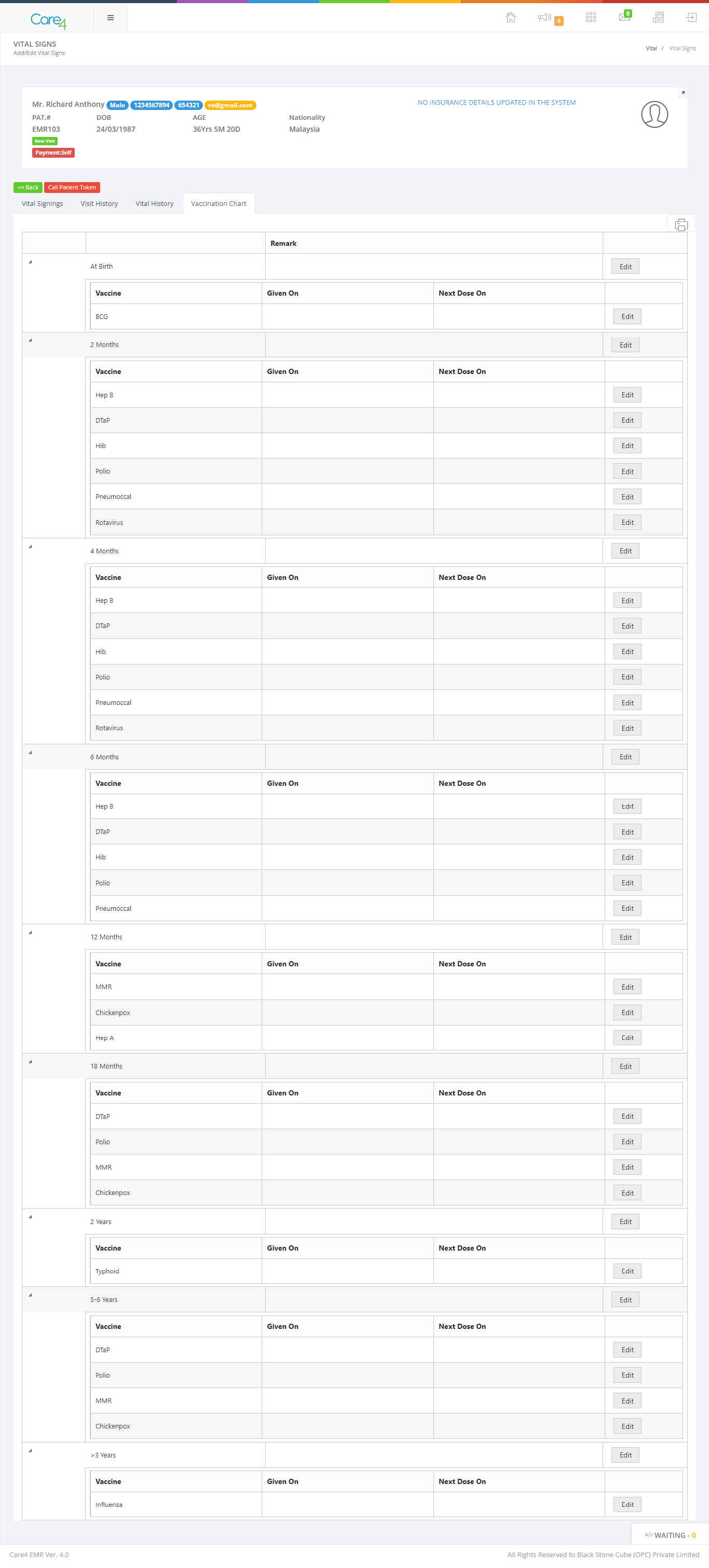VITAL CHECKING
The hospital vital checking process is a routine procedure that is performed on patients to assess their overall health status. The four main vital signs that are typically checked are:
• Body temperature
• Pulse rate
• Respiration rate
• Blood pressure
In some cases, other vital signs may also be checked, such as:
•Oxygen saturation
• Blood glucose level
• Pain level
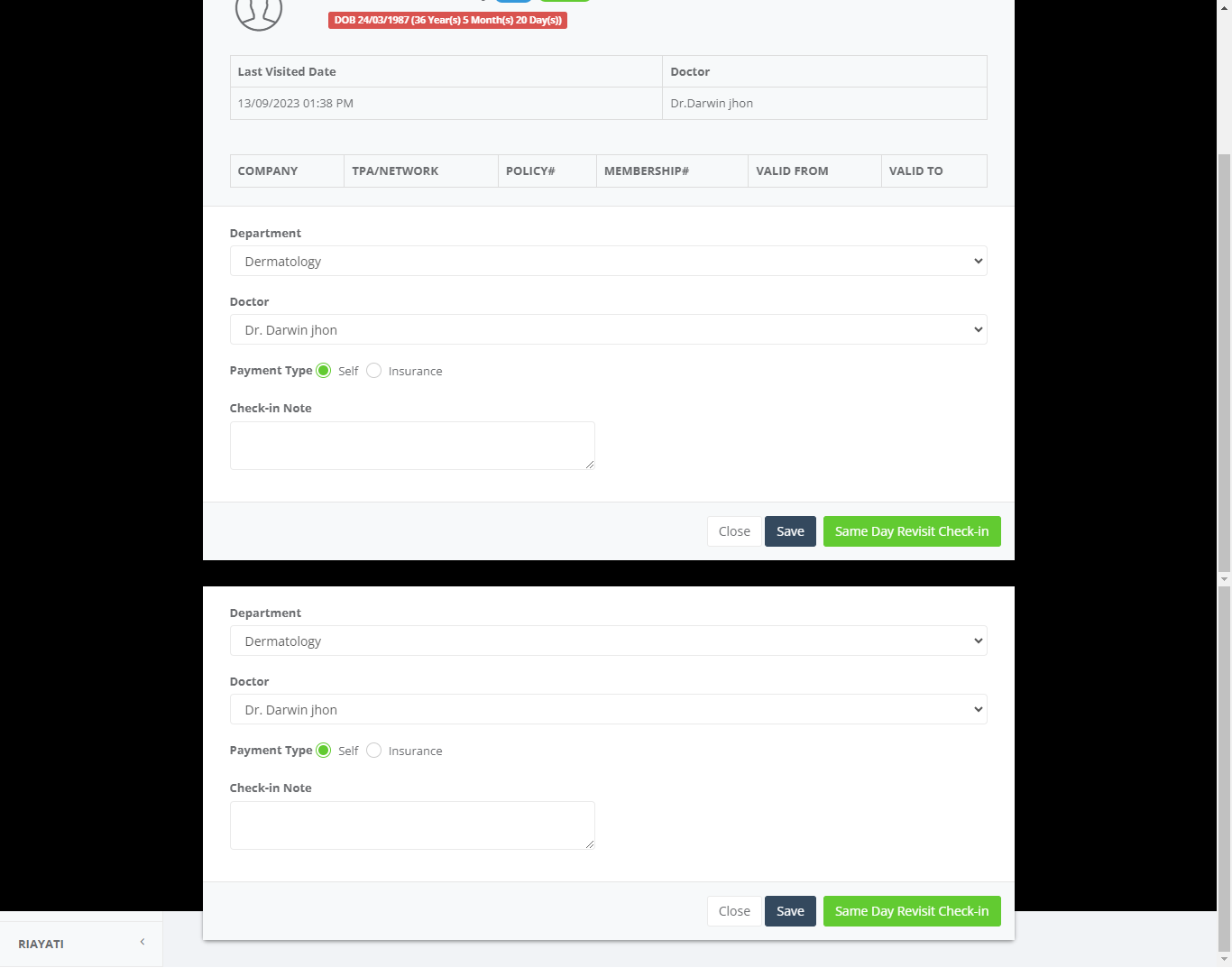
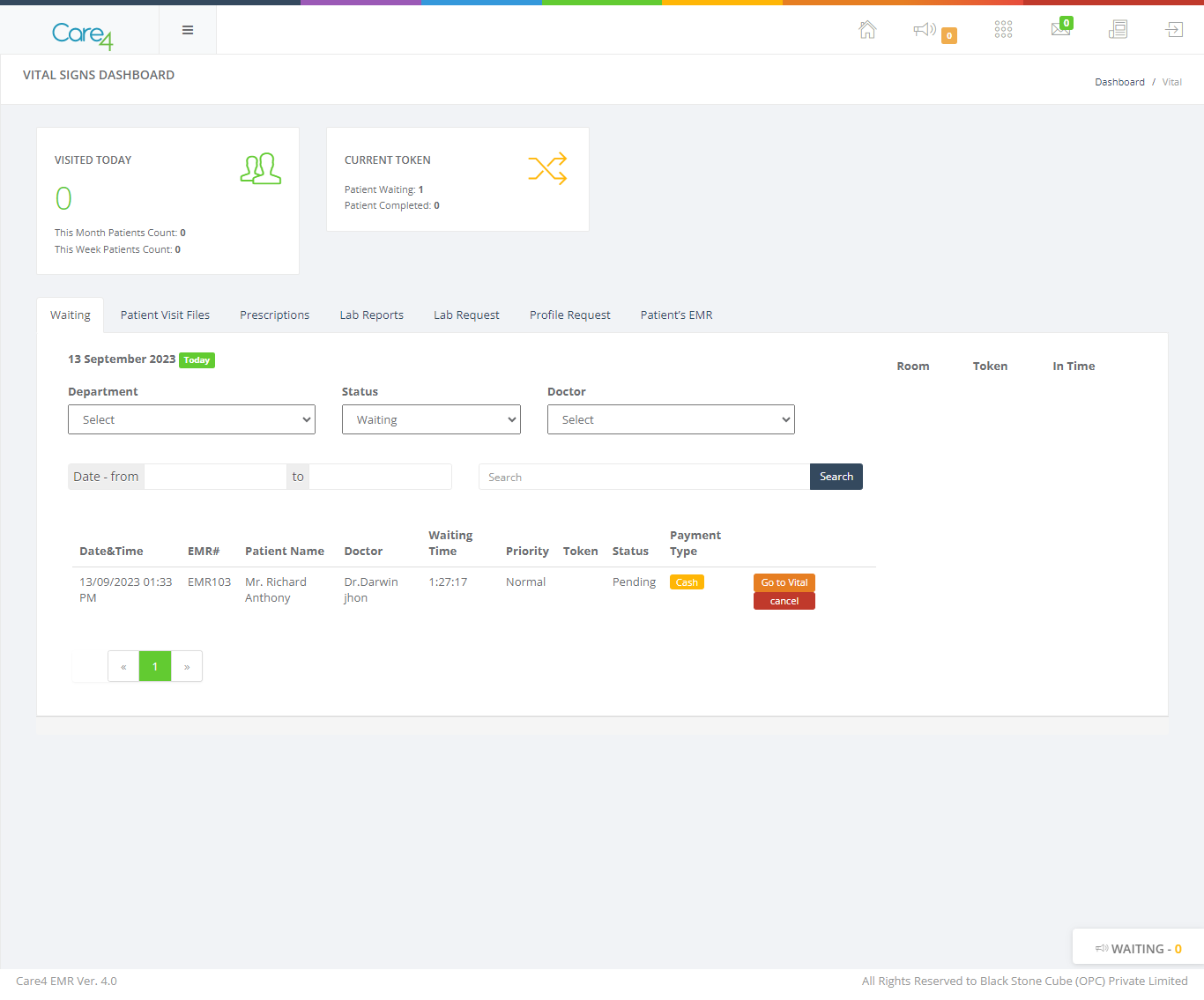
Then we get check in page. Fill the page by selecting department and doctor which we want to consult, payment type(self/insurance), payment mode, check in note etc. For vital checking we have to check in followed by the registration process.
Then select vital checking. We get a new page with patients check in details in the waiting tab.
vital checking process
The vital checking process is typically performed by a nurse or other healthcare professional. The steps involved in the process are:
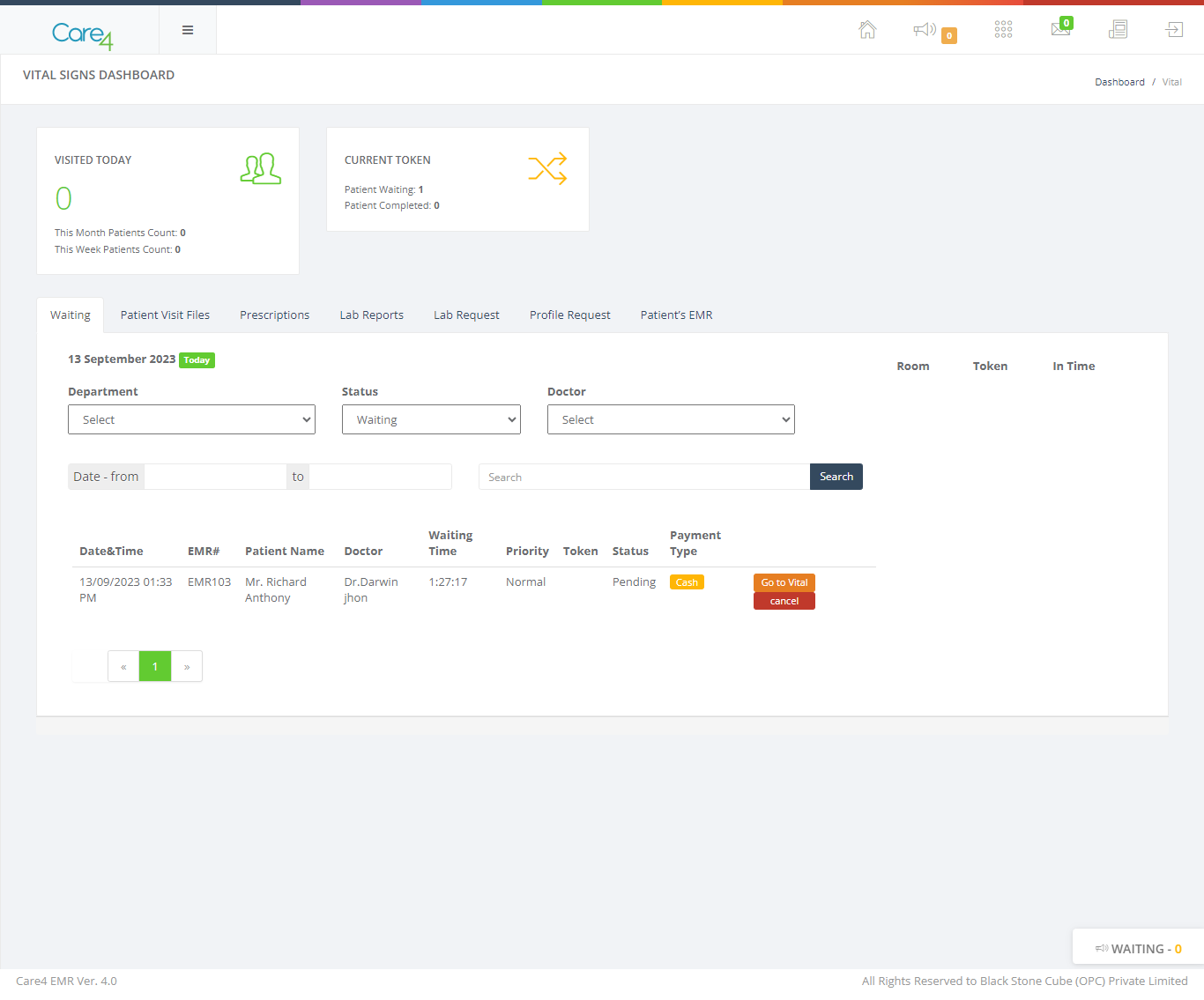
First click on the go to vital button, then we get a new page Identify the patient. This ensures that you are taking the vital signs of the correct person.
1. Explain the procedure to the patient. This helps to put the patient at ease and makes them more comfortable.
2. Gather the necessary equipment. This typically includes a thermometer, a stethoscope, a blood pressure cuff.
3. Measure the patient's temperature. This can be done using a digital thermometer or a glass thermometer.
4. Measure the patient's pulse rate. This is done by placing your fingers on the patient's wrist or neck and counting the number of beats per minute.
Vital Signing
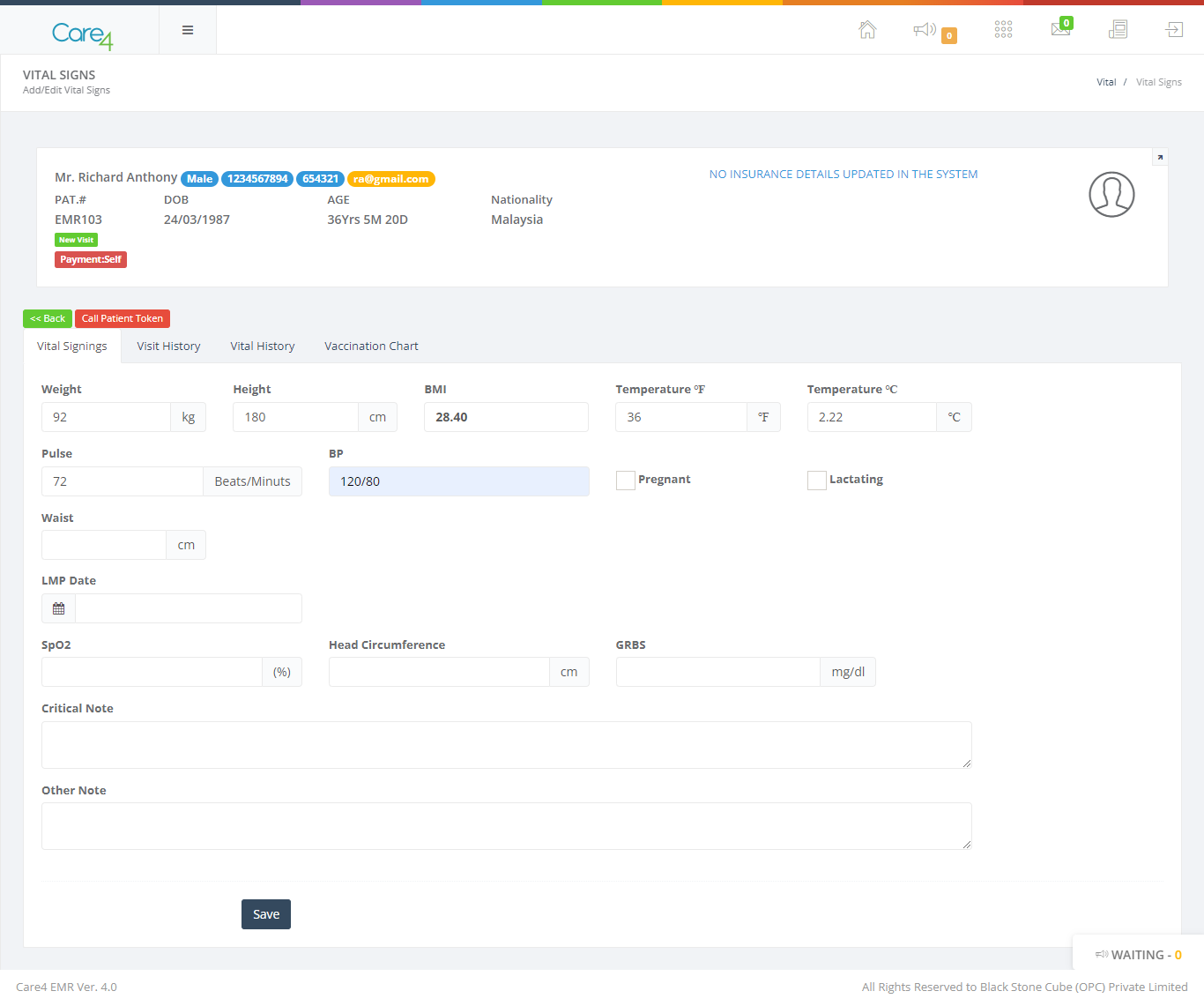
Measure the patient's respiration rate. This is done by counting the number of breaths the patient takes per minute. Measure the patient's blood pressure. This is done by placing a blood pressure cuff on the patient's arm and inflating it until the blood flow is blocked. The cuff is then deflated slowly and the blood pressure is recorded. Document the patient's vital signs. This information is typically recorded in the patient's medical record.
Visit History
A hospital visit history tab is a section of a patient's medical record that contains information about all of the times the patient has visited a hospital. This information can include the date and time of the visit, the reason for the visit, the tests and procedures that were performed, the medications that were prescribed, and the discharge diagnosis.
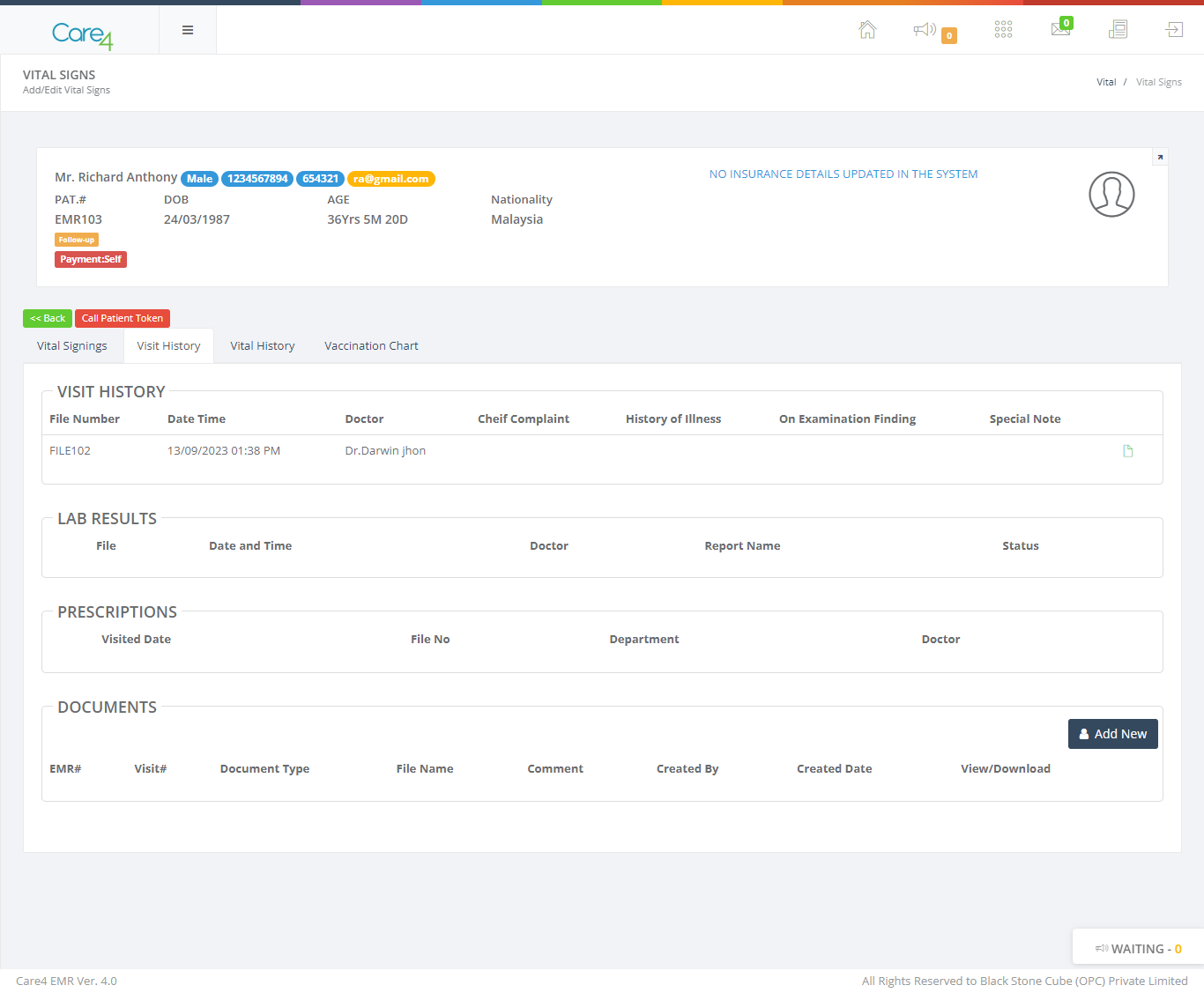
Vital History
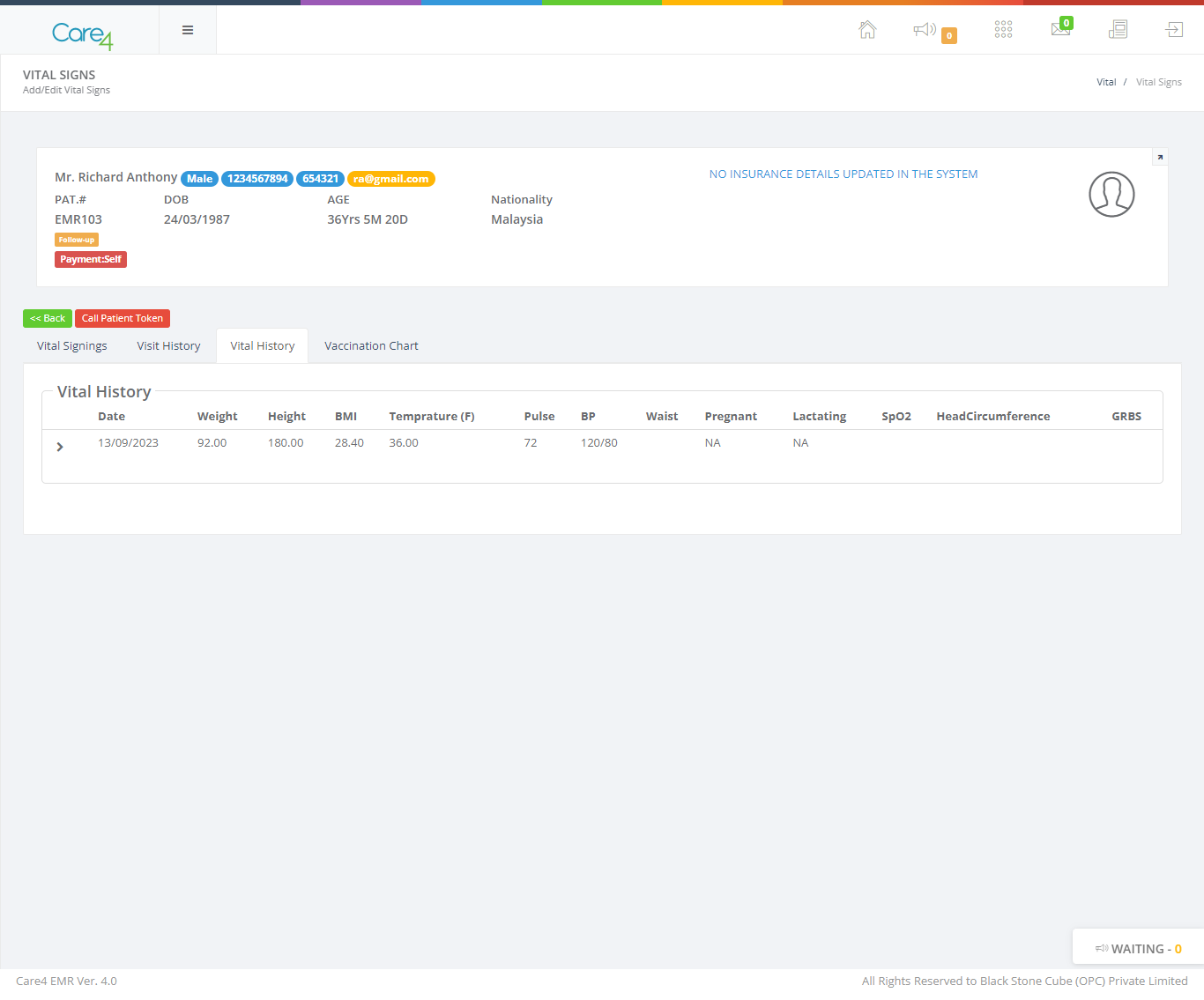
A hospital vital checking history is a section of a patient's medical record that contains information about the patient's vital signs, such as temperature, pulse rate, blood pressure, and respiratory rate. This information is typically recorded every few hours, and it can be used to track a patient's progress over time and to identify any potential problems.
